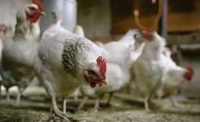Inflation has taken a toll on every side of the meat and protein industries, from consumers to retailers and producers. In its November inflation report, November 2022 Price Check: Tracking Retail Food and Beverage Inflation, IRI discusses key findings regarding inflation and consumer responses. Key findings from the report include several product categories declines in price in November versus October, many top Thanksgiving items sold on promotion, varied inflation across the store. The report also shows that while price increases are beginning to slow, food inflation was up 13.2% in November versus one year ago.
IRI discussed its November inflation report and what the findings mean for consumers, as well as the meat and protein industries. Melissa Rodriguez, principal, Client Insights at IRI, said that inflation variation in the store applies to meat and protein products. “For example, [bacon] saw significant inflation early on in 2022 and then decreased in October/ November,” Rodriguez said. “That being said, meat in general is still holding its share of wallet compared to pre-pandemic levels, despite the high price increases, which is promising as we head into 2023.”
As inflationary concerns put pressure on consumers, consumers are adjusting by changing their purchasing patterns. “We’ve noticed basket units falling and less volume per trip as prices rise. Discretionary purchases will continue to soften if they’re not meeting key consumer needs,” Rodriguez said. “Certain categories just won’t make the cut in times of inflation.”
As consumers are becoming more price-conscious in their spending patterns, they are buying some of their products in private label, Rodriguez said. “In terms of protein, SS meats and frozen poultry have seen the largest private-label share gains,” Rodriguez said. “Private brands also saw some growth in chicken as well, but it was really more prevalent on the center store side of proteins/meats.”
Inflation does impact consumers heavily, but it also impacts every side of the food industry. Rodriguez reported that, overall, key products have still been available. “Perhaps some items have gotten smaller in sizes (offering different ounces to offset the higher prices) but in general the offerings were there, much more so than the last few years,” Rodriguez said. “The one exception I’d say is that in [processed meat] we did see some declines in the number of items on-shelf, so the items there were having to work harder to produce the same results.”
In addition to inflationary concerns, highly pathogenic avian influenza has been a major issue for multiple industries this year. “The largest impact for availability was in eggs and turkey, as noticed consumer shifting to smaller birds (partially driven by the supply),” Rodriguez said. “In terms of chicken, it has bounced back nicely in general from both a supply and pricing is starting to level off, there’s plenty of chicken out there.”
Rodriguez said that the variation of inflation across the store comes from both supply chain and demand. “Inflation definitely varied across [proteins] – we saw the highest price increases (looking at latest November numbers vs. YA as well as vs. October 2022) in turkey, ham and some exotic meats,” Rodriguez said. “Inflation leveled off for chicken, bacon and dinner sausage, but still remains higher priced than YA.”
In its report, IRI observed that the price of bacon has been declining. This decline is due to less pressure from industry complications like inflation and supply chain issues, Rodriguez said.
Though inflation has impacted many aspects of the industry, Thanksgiving was not greatly impacted. In fact, IRI’s November inflation report said that Thanksgiving saw a strong volume sales lift of 72%. Early Thanksgiving discounts helped consumers combat price issues, Rodriguez said. “The supply was there, so these discounts really allowed retailers to move supply but also offered relief to consumers,” Rodriguez said.
In addition to promotions, though, consumer demand for tradition led to changes in purchasing trends, especially in an inflationary environment, Rodriguez said. “During inflationary times, consumers may tend to shop [mass] or [club] outlets, but we saw consumers going back to traditional grocery for some of their holiday meal staples,” Rodriguez said.
Sales on promotion accounted for almost 15% of turkey volume in November, but volume for other proteins like chicken, bacon and dinner sausage benefitted from deals as well, Rodriguez said.
Altered meal shopping and preparation was another consumer behavior change in the holiday season, Rodriguez said. “For example, this year if you were a guest at a Thanksgiving gathering, you were maybe tapped to provide a larger side or contribute a bit more, to take the financial burden off of the host,” Rodriguez said. “We saw a lot of that, and just more pot-luck style in general.”
As the holiday season comes to a close, consumers are wondering how inflation will impact their purchases in the upcoming year. Though IRI reported that inflation is levelling off, Rodriguez urges the industry to still be wary of inflation. “We’ve seen supply rebound in certain areas, and that’s helping alleviate some of the pressure,” Rodriguez said. “With promotions running high on [proteins] in the month of November, that did produce some volume; however, the gains were offset by the drop in dollars (from the deep discounts). Prices are coming down in areas such as chicken and bacon as supply recovers.”


-(780-%C3%97-439-px)-(780-%C3%97-439-px)-(5).jpg?height=200&t=1665690977&width=200)

Report Abusive Comment